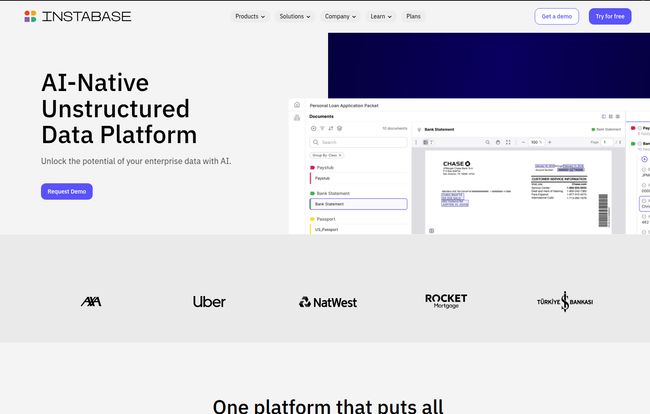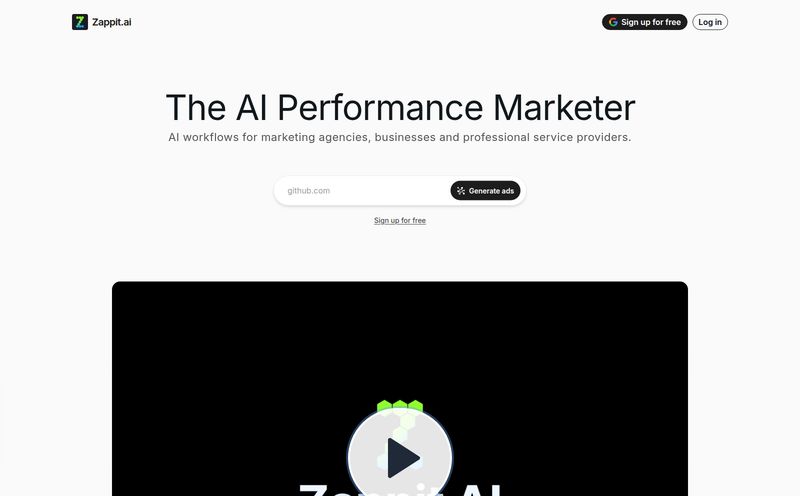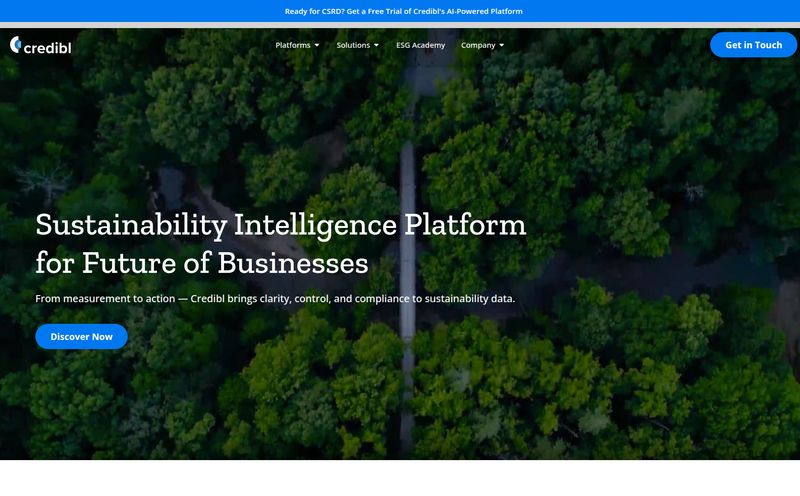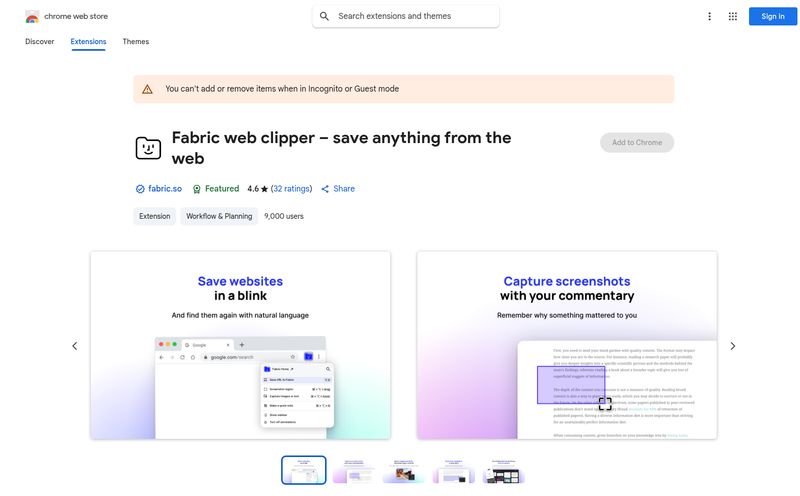Let’s have a little chat. You and me. As someone who’s been neck-deep in the worlds of SEO, traffic, and digital operations for years, I've seen one problem cripple more businesses than almost any other: data chaos. Not the neat, tidy data that fits into spreadsheets. I’m talking about the other stuff. The wild, untamed wilderness of PDFs, scanned invoices, customer emails, insurance claims, and random Word docs that make up something like 80% of a company's information. It's the digital equivalent of a messy attic, filled with priceless heirlooms and absolute junk, all jumbled together.
For ages, we've been trying to solve this. OCR was a start, but it often felt like using a flip phone in a smartphone world. Then came other automation tools, but they were often brittle, requiring armies of developers to maintain. But the game is changing, thanks to the explosion in generative AI. And that’s where a platform like Instabase enters the conversation. I’ve been keeping my eye on them, and what they're building is... well, it’s pretty interesting.
So, What Exactly Is Instabase?
At its core, Instabase calls itself an “AI-Native Unstructured Data Platform.” That’s a mouthful, I know. Let’s break it down. Think of it less as a single tool and more as a complete workbench. It’s designed to go into that messy digital attic, understand what every single item is (a receipt, a legal contract, a medical chart), and then intelligently organize, extract information, and even take action on it. It’s not just reading documents; it's understanding them in context.
They’re using the latest wave of generative AI—the same tech that powers tools like ChatGPT—but applying it to the very specific, and often very boring, business processes that slow companies down. This isn't about writing a poem or creating a funny image. This is about automating claims processing, speeding up client onboarding, and finding the one critical clause buried in a 300-page contract. You know, the stuff that actually makes a business run.

Visit Instabase
Going Beyond Simple Document Reading
Here’s what made me lean in a little closer. Instabase talks about three core concepts that set it apart from basic automation tools: Content Understanding, Agentic Reasoning, and Federated Processing. Yeah, more jargon, but stick with me.
- Content Understanding: This is the foundation. It can look at a complex document with tables, photos, and handwriting and not just turn it into text, but understand that “this block of numbers is a summary table” and “this signature belongs to the applicant.”
- Agentic Reasoning: This is the cool part. It’s where the AI starts to think like an employee. It can take a multi-step process, like verifying an insurance claim, and execute it. It checks the claim form against the policy document, flags inconsistencies, and routes it to the right person for approval. It’s like a super-powered intern who never sleeps or asks for a coffee break.
- Federated Processing: For any big company, data privacy is a huge deal. This feature allows the AI to work on data where it lives—whether that's in your own cloud storage or on-premise servers—without having to move it all to a central location. It’s a massive plus for security and compliance.
Who Is This Platform Really For?
Let's be clear, this probably isn't a tool for your local bakery (unless they have some seriously complex invoicing). The logos plastered on their site—AXA, Uber, NatWest, Rocket—tell you everything you need to know. Instabase is built for the enterprise. We’re talking about industries drowning in paperwork and regulatory hurdles:
- Insurance: Think claims processing, underwriting, and policy administration.
- Financial Services: Mortgage applications, trade finance, and client onboarding are prime use cases.
- Healthcare: Patient intake forms, medical records, and billing.
- Public Sector: Government agencies dealing with endless forms and applications.
If your company has entire departments dedicated to manually processing documents, Instabase is waving a big flag in your direction. The social proof is strong, too. They’re not just a flash-in-the-pan startup; being recognized by Gartner, Inc. 5000, and as one of America's Best Startup Employers for 2024 lends them some serious credibility.
A Look Under the Hood at the Features
When you get down to it, what can you actually do with it? The platform is built around a few core pillars.
The AI Hub, Your Central Command
This seems to be the heart of the platform. It’s the single place where you build, test, and deploy your automated processes. The idea is to have one consistent environment for understanding any document, building new solutions, and connecting different systems. No more duct-taping five different tools together and hoping they all play nice.
Automated Workflows that Make Sense
The real magic isn't just extracting the data; it’s what happens next. Instabase allows you to build complete workflows. For example, a document comes in, the system identifies it, extracts key data points, validates those points against a database, asks a human for review if confidence is low, and then pushes the final, clean data into another system like a CRM or ERP. This end-to-end approach is what separates a powerful platform from a simple point solution.
Generative AI for Real Insights
This is more than just extraction. With their generative AI capabilities, you can essentially “talk” to your documents. Imagine being able to ask a question like, “Summarize the key risks outlined in all of our client contracts from Q3” and getting a coherent answer. Or “Find all invoices from Vendor X that are over $10,000 and past due.” This turns a passive archive of data into an active, searchable knowledge base.
Let's Talk About Plans and Pricing
Ah, the million-dollar question. Or, in this case, the “Contact Us for a Quote” question. As is typical with enterprise-grade software, a lot of the pricing is kept behind a conversation. But they do give us a peek with two main tiers:
The Commercial plan seems geared towards smaller teams or departments looking to get their feet wet. It offers unlimited users and workspaces, lets you process up to 100,000 pages a month with their core data extraction tools, and includes features for managing human-in-the-loop reviews. It’s a pretty generous starting point, and they offer a free trial, which is always a good sign.
Then you have the Enterprise plan. This is the whole shebang. It includes everything from the Commercial plan and adds on the heavy-duty stuff: advanced security features like single sign-on (SSO), support for more complex document types, case management tools, and service-level agreements (SLAs) that guarantee uptime. It’s designed for large-scale, mission-critical deployments. For this, you’ll have to get on the phone with their sales team, which makes sense. A solution this complex needs to be scoped to a company's specific needs; a one-size-fits-all price tag just wouldn't work.
One of the main differences I spotted in their comparison table is the more advanced AI capabilities in the Enterprise tier, like extracting data from tricky tables and using custom AI prompts to clean data. So if your documents are particularly gnarly, you’re likely looking at the Enterprise plan.
Security and Trust Are Not an Afterthought
I have to give them credit here. In a world where data breaches are a weekly headline, Instabase puts security front and center. They prominently display their compliance with GDPR, HIPAA, and CCPA. For their target customers in finance and healthcare, this isn't just a nice-to-have; it's a non-negotiable requirement. The promise of “complete control over your data” and the federated processing model shows they understand the anxieties of a CIO. It's a smart move that builds immediate trust.
Frequently Asked Questions About Instabase
I've pulled together some of the common questions I've seen people ask, plus a few of my own.
What kind of files can Instabase handle?
Quite a range, actually. They list all the usual suspects like PDF, PNG, JPEG, and TIFF, but also Microsoft Office files (DOCX, PPTX), email formats like MSG and EML, and even web formats like HTML. It's designed to be pretty format-agnostic.
Can it actually read handwriting?
Yes, their site says it can process long documents, which often includes handwritten sections. This is a classic challenge for old-school OCR, and any modern platform worth its salt needs to handle it. The accuracy will always vary, but having the capability is a big step up.
Is there a limit on how much data I can extract?
The Commercial plan has a page limit (100k/month), but the Enterprise plan seems to be more about custom configuration. In terms of fields per document, modern AI models are much more flexible than older template-based systems, so you’re generally not limited to a specific number of fields you can extract.
Is it difficult to set up?
This is my own addition. Based on my experience with platforms this powerful, you should expect a learning curve. While they likely have low-code/no-code interfaces, getting the most out of features like federated processing or building complex agentic workflows will probably require some technical expertise or working with their implementation team. This isn't a plug-and-play app; it's an enterprise system.
What if the AI makes a mistake?
This is crucial. No AI is perfect. That's why the “human-in-the-loop” functionality is so important. The platform is designed to flag uncertain extractions and route them to a person for a quick review. This combination of AI speed and human judgment is where the real power lies.
Final Thoughts on Instabase
So, is Instabase the ultimate solution? For the right company, it just might be a game-changer. It’s tackling a massive, expensive, and frustrating problem with some of the most advanced technology available today. They’re not just selling a tool; they're selling a new way of operating, one where your data works for you instead of the other way around.
Of course, it’s not for everyone. The lack of transparent pricing for the top tier and the likely complexity mean it’s a serious commitment. But for large organizations feeling the pain of manual document processing, the potential ROI in terms of time saved, errors reduced, and new insights gained could be enormous. If your company’s attic is overflowing, Instabase is definitely one of the professional organizers you should call.
References and Sources
- Instabase Official Website
- Inc. 5000 Fastest-Growing Private Companies List
- Forbes' America's Best Startup Employers 2024
- Gartner Market Guide for Intelligent Document Processing (Note: Access may require a subscription)



